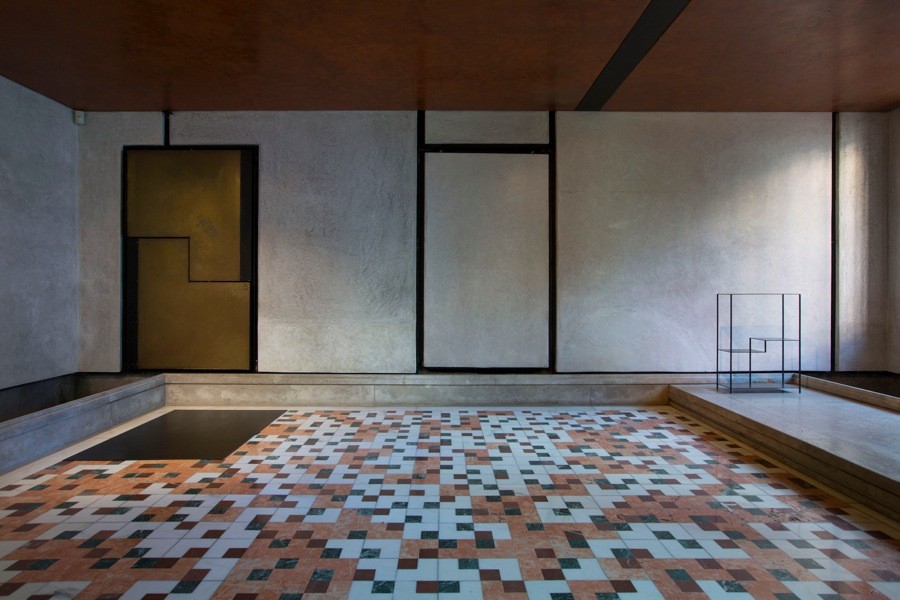Haris Epaminonda
09 Feb - 02 Apr 2018
HARIS EPAMINONDA
9 February – 2 April 2018
The works of Haris Epaminonda are neither strictly minimalist nor thoroughly conceptual. Her methods revolve around the migrant nature of images—and essentially also around that of symbols. Her tools are installation, sculpture, film, found images, books, and collage; her formal lexicon, established from her earliest exhibitions in the first decade of this century, is made up of a rather limited number of objects. These include metallic structures (plinths, frames, display cases), gold leaf, fragments of pastellone (a mixture of marble powder and lime) placed on the floor or the wall, exotic artifacts (vases, sculptures, miniature pieces of architecture), pedestals or podiums that punctuate the space, and collages of found pages that are remounted and framed. Epaminonda often includes living beings—plants, animals, humans—in her installations, from which emerges a specific ritualistic quality, perhaps a certain insistent form of the sacred. Like paintings that await their color, Epaminonda’s images carry within themselves their own future inscription. They are the locus of reinterpretations to come of a history whose code or meaning she has deliberately abolished.
Haris Epaminonda, born in 1980 in Nicosia (Cyprus), lives and works in Berlin.
9 February – 2 April 2018
The works of Haris Epaminonda are neither strictly minimalist nor thoroughly conceptual. Her methods revolve around the migrant nature of images—and essentially also around that of symbols. Her tools are installation, sculpture, film, found images, books, and collage; her formal lexicon, established from her earliest exhibitions in the first decade of this century, is made up of a rather limited number of objects. These include metallic structures (plinths, frames, display cases), gold leaf, fragments of pastellone (a mixture of marble powder and lime) placed on the floor or the wall, exotic artifacts (vases, sculptures, miniature pieces of architecture), pedestals or podiums that punctuate the space, and collages of found pages that are remounted and framed. Epaminonda often includes living beings—plants, animals, humans—in her installations, from which emerges a specific ritualistic quality, perhaps a certain insistent form of the sacred. Like paintings that await their color, Epaminonda’s images carry within themselves their own future inscription. They are the locus of reinterpretations to come of a history whose code or meaning she has deliberately abolished.
Haris Epaminonda, born in 1980 in Nicosia (Cyprus), lives and works in Berlin.

